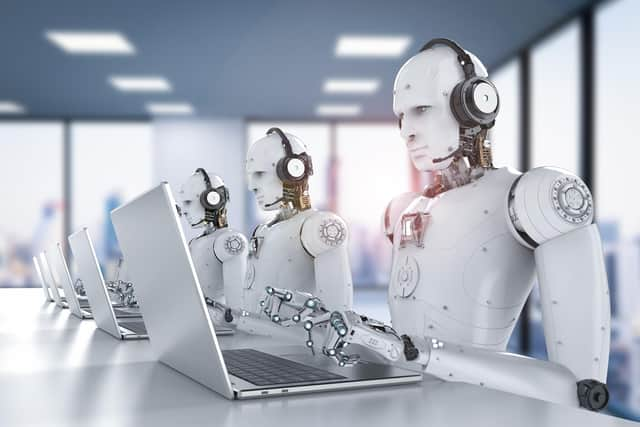Every role can potentially be reinvented with AI - David Caskie
When ChatGPT reached 100 million monthly active users just two months after launch, making it the fastest-growing consumer application in history, everyone, everywhere began to see the technology’s true disruptive potential for themselves.
Across all businesses and industries, we found that 40% of all working hours could be impacted by generative AI. The key here is that the technology behind the likes of ChatGPT, Bard and others– the large language models (LLM) and foundation models – impacts tasks rather than occupations.
Advertisement
Hide AdAdvertisement
Hide AdAnd for the 98% of global executives who agree that the technology will play an important role in their organisations’ strategies in the next 3-5 years or the 42% of companies telling us they want to make a large investment in ChatGPT in 2023, it will be critical to consider how jobs will change and how to support employees through that transition.


New technology has invariably opened up new possibilities and created new kinds of jobs that were previously unknown. Generative AI is no different. It marks the beginning of a new phase in the abilities of language-based AI applications: models that will have far-reaching consequences, since language permeates everything an organisation does day to day—from its institutional knowledge, to communication and processes.
LLMs can be adapted or fine-tuned for a wide range of tasks, allowing them to be reused or repurposed in many different ways. The surge in ChatGPT’s popularity to create digital images and content is just the start. We can already see that this technology is poised to shape the future of science, enterprise data, how we design and manufacture products, and so much more.
In the workplace, the disruptive power of generative AI heralds a new dimension of human and AI collaboration. It will mean that most workers may have a ‘co-pilot’, dramatically amplifying what they can achieve.
Generative AI models can boost productivity in areas such as customer service, coding and document generation, by taking away routine tasks. It can become an essential creative partner for the product designer, bringing unprecedented speed and innovation to the process. Or the expert research assistant in any number of healthcare environments.


There will also be a large number of new tasks for people to perform, such as ensuring the accurate, compliant and responsible use of new AI-powered systems.
Right now, companies are beginning to experiment. There are opportunities for using existing applications to realise quick returns, but equally, businesses need to look at how to customise the technology in ways that are specific to their operation and using their own data. This involves redesigning jobs and tasks and reskilling people, ramping up the investment in talent and technical competencies across the organisation to work effectively with AI-infused processes. Over time, every role in an enterprise has the potential to be reinvented.
Ultimately, too, generative AI relies on vast amounts of curated data to learn and that makes solving the data challenge an urgent priority for every business. There needs to be a strategic and disciplined approach to acquiring, refining, safeguarding and deploying data, backed by a responsible and robust AI governance regime.
Advertisement
Hide AdAdvertisement
Hide AdThe rapid rise of generative AI raises important questions about the responsible use of AI. The speed of the technology evolution and adoption requires companies to pay close attention to any legal, ethical and reputational risks they may be incurring. AI systems need to be “trained” with a diverse and inclusive set of inputs so that they reflect the broader business and societal norms of responsibility, fairness and transparency.
We’re at the start of an incredibly exciting era that will fundamentally transform the way information is accessed, content is created, customer needs are served, and businesses are run. Businesses are right to be optimistic about the potential of generative AI, but they also need to be realistic about the challenges that will come with profoundly rethinking how the organisation works, with implications for IT, responsibility by design, organisation, customers, employees and culture.
Accenture’s report on generative AI can be accessed Generative AI Technology in Business | Accenture
David Caskie, Joint Managing Director, Accenture in Scotland
Comments
Want to join the conversation? Please or to comment on this article.